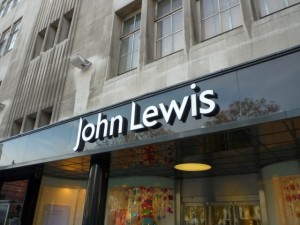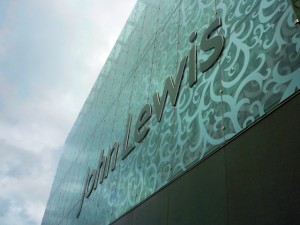Given how long it’s been since the weekly trading figures for John Lewis department stores last recorded a year-on-year fall in sales, it’s little wonder that the 2.2% sales drop announced today seems to be causing a few jitters.
On the back of this month’s VAT increase and an apparent “astonishing” plunge in consumer confidence, it’s inevitable that any sign of a wobble in trading at the UK’s retail bellweather will catch the eye of commentators. We’ll have to wait for future weeks’ figures to see whether this fall is merely, as John Lewis suggests, a weather-skewed blip, or if it does mark the beginning of something more unpleasant.
For the half year as a whole, however – which ends with next week’s figures – it’s hard to argue that a 10% year-on-year rise in sales is anything but impressive, even if the stellar rise in online sales (38.9% up year on year) does to some extent mask a comparatively less strong performance from John Lewis’s shops. Of those, the half-year performances at Cambridge (+9.4%), Leicester (+8.8%) and Oxford Street (+8.1%) are the most improved.
Thinking about the John Lewis sales figures brought to mind my third ever blog post – a whole 170 posts ago – written back at the height of the recession in July 2009 when weakened retailers, post-Woolies, were still dropping like flies. It’s worth placing today’s 2.2% John Lewis sales drop in the context of the trading picture that I described back then. By way of reminder, here’s some of what I wrote 18 months ago:
Giving a picture of slightly longer-term trends, the comparisons given for the current half-year, rather than just the last week, tend to be more insightful.
These remind us just how challenging John Lewis’s trading was between February and April – even after what is now 13 successive weeks of positive figures compared to 2008, Cambridge is still the only physical store to have enjoyed better sales (up 1.5%) over the current 24-week period than it did during the same stretch a year ago.
In contrast, it’s interesting that John Lewis’s worst performing store over the last 24 weeks has been John Lewis Bristol at the out-of-town Mall at Cribbs Causeway, where sales are down a whole 12.5% compared to last year.
Comparing figures for that half-year with the most recent one show just how much things have improved. Cambridge’s recent +9.4% performance is clearly much better than the +1.5% that I wrote about in July 2009, while Bristol – down 12.5% year on year back then – is currently registering a sales fall of only 0.6% for the current half year. Of course, the flipside is that these comparisons remind us how bad things could yet get, if all the worst fears of a double-dip recession are realised.
While Bristol was the weakest performing John Lewis store in early 2009, it’s interesting that current half year figures award that slightly dubious status to Newcastle. Sales at the former Bainbridge are down 3.5% compared to a year ago, with Liverpool (-1.3%) the only other store to record a sales decrease of more than 1%.
However, just as I observed back then that the Bristol store’s figures were undoubtedly impacted by the recent opening of Cabot Circus, one must imagine that the opening of Newcastle’s Debenhams-anchored St Andrew’s Way, in February last year, has had a similar effect on the John Lewis up here. In the same way as Bristol’s figures have now smoothed out, it will be interesting to see what the JL weekly stats for Newcastle look like once the opening of the Eldon Square extension is no longer skewing the year-on-year comparisons.
Even with the overall boost in sales and footfall that the Eldon Square extension has surely given Newcastle city centre, it was always likely that there would be some cannibalisation of existing stores. However, the apparent impact of Debenhams’ opening raises interesting questions about how far Newcastle could support any more upmarket department stores, with House of Fraser, Selfridges and Harvey Nichols all having been linked to the city at various points in the last twenty years.
Maybe we should just be content with our John Lewis, Fenwick and Debenhams – after all, since the closure of Joplings last year, it is still two more department stores than Sunderland has…
The post Putting today’s John Lewis sales drop in perspective appeared first on Soult's Retail View.





















